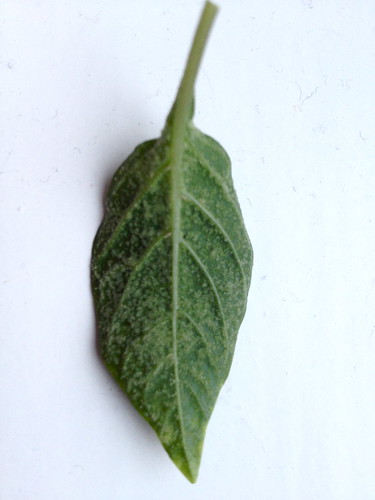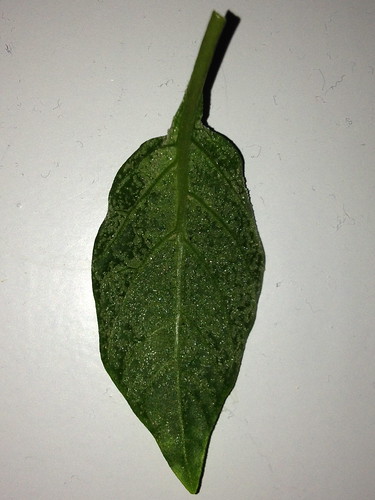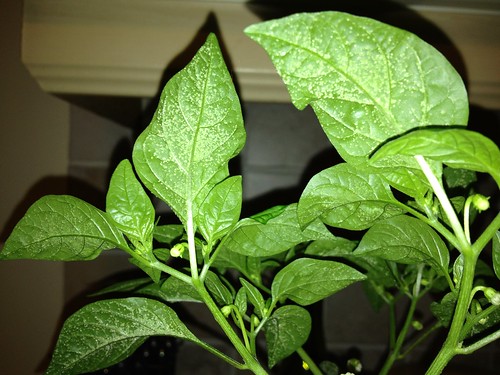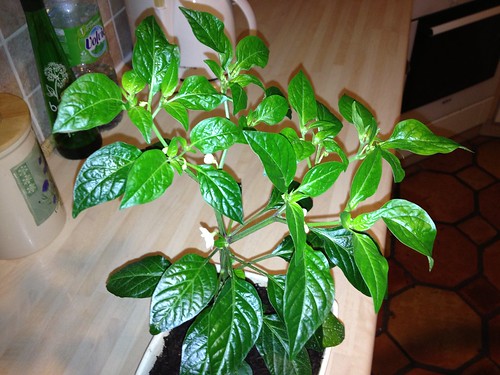I've been growing 14 different varieties of chillies in close proximity under fluorescent lights and have noticed that there is some disease on a number of them. However, interestingly, my twilight chillies and cayenne seem the worst affected, this also includes bishop's hat and scotch bonnet's to a much lesser extent.
The plants still look healthy (good coloration and no noticeable growth problems, however some the old leaves that have been badly affected for a while have fallen off, however not sure if this is because of the disease.
It looks like a white sort of crystalline material is present on the underside of the leaves all up the plant and is particularly vigorous along the veins.
Here is a leaf (no flash)

With flash

twilight chilli plant

yet from the top the plant looks fine and healthy

Not sure if it is viral, bacterial or fungal? Any suggestions of what it might be and how to deal with it would be much appreciated.
The plants still look healthy (good coloration and no noticeable growth problems, however some the old leaves that have been badly affected for a while have fallen off, however not sure if this is because of the disease.
It looks like a white sort of crystalline material is present on the underside of the leaves all up the plant and is particularly vigorous along the veins.
Here is a leaf (no flash)

With flash

twilight chilli plant

yet from the top the plant looks fine and healthy

Not sure if it is viral, bacterial or fungal? Any suggestions of what it might be and how to deal with it would be much appreciated.
